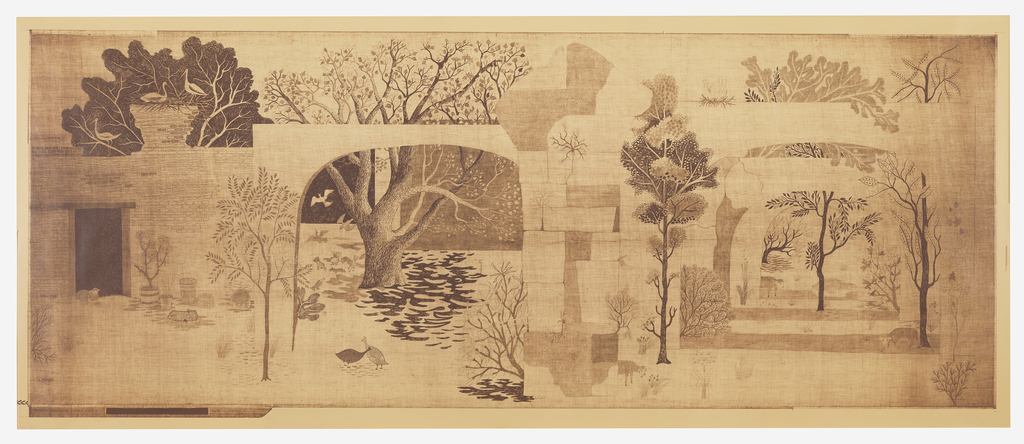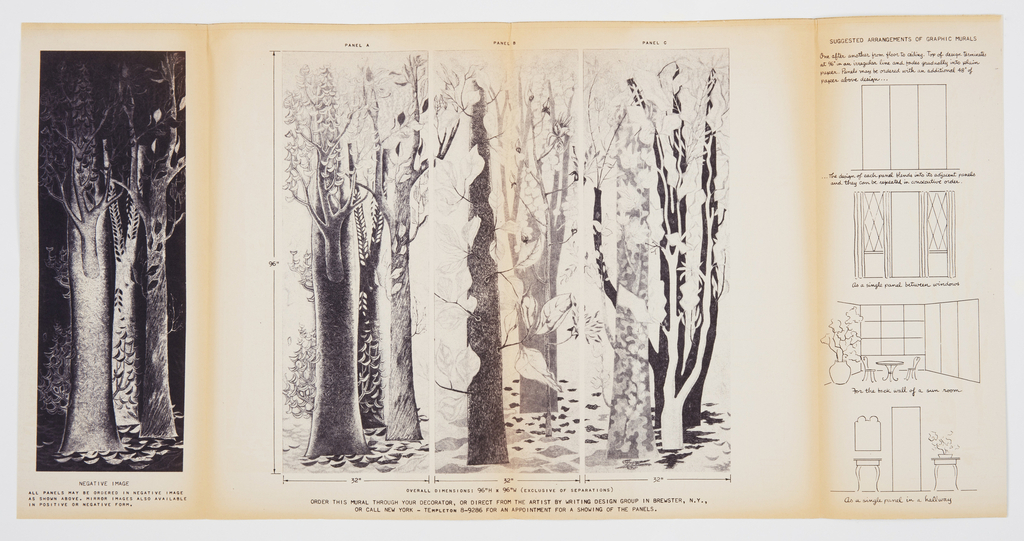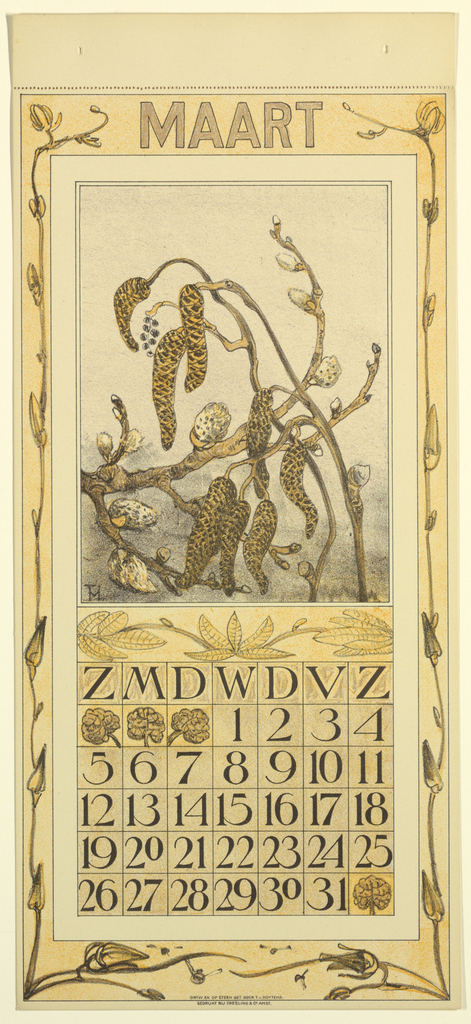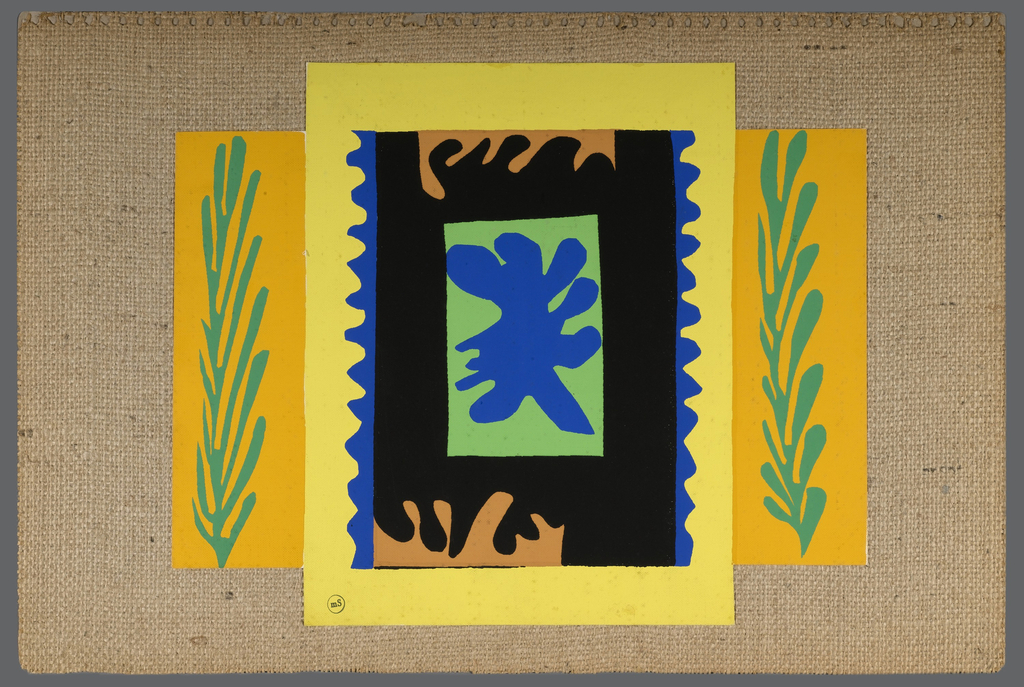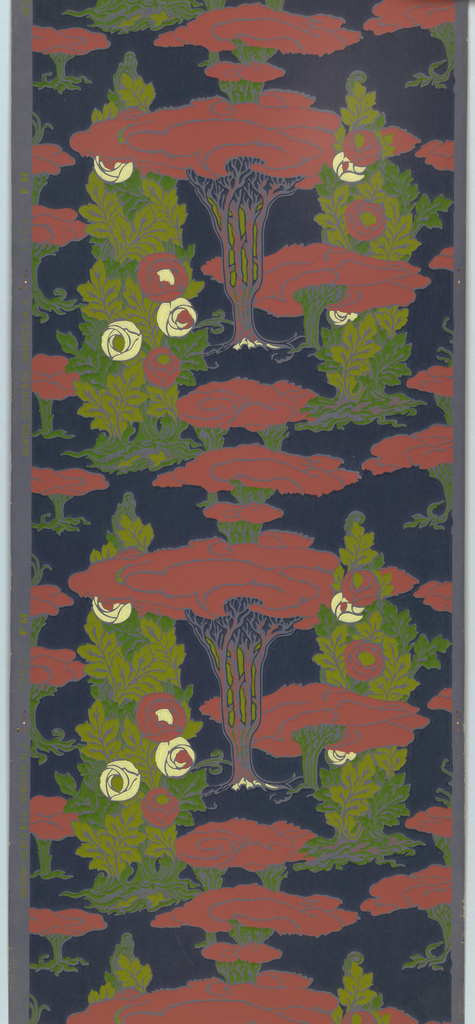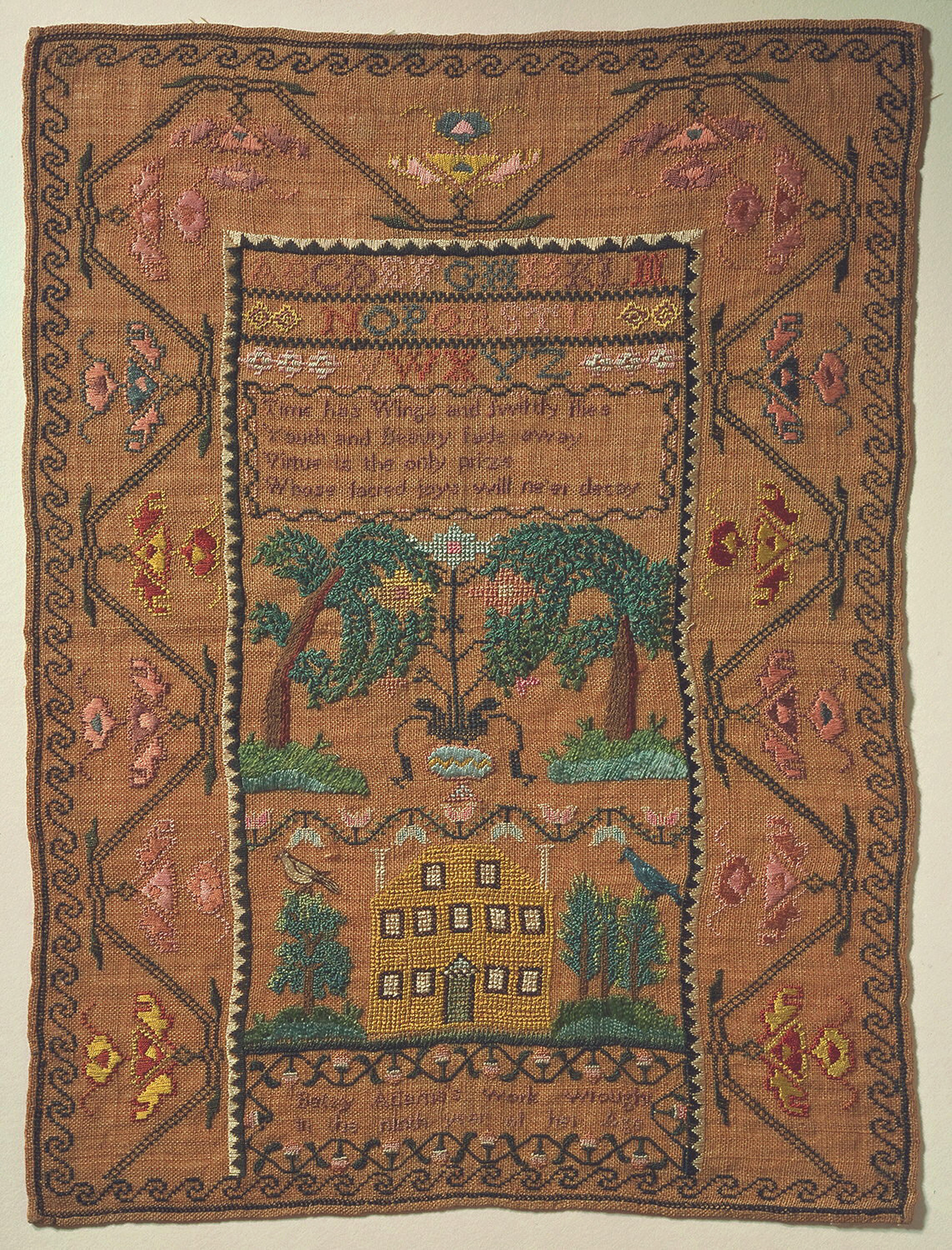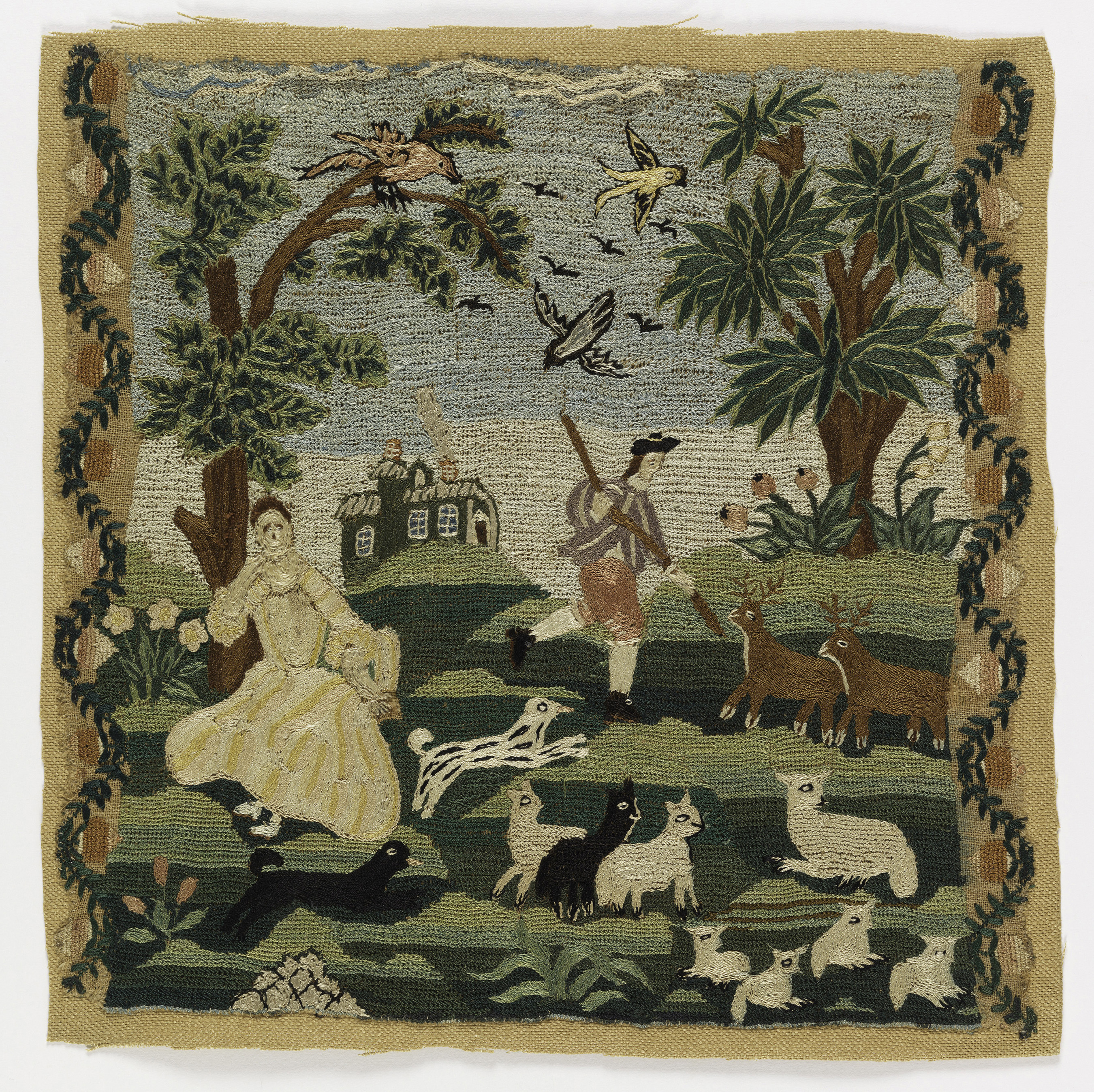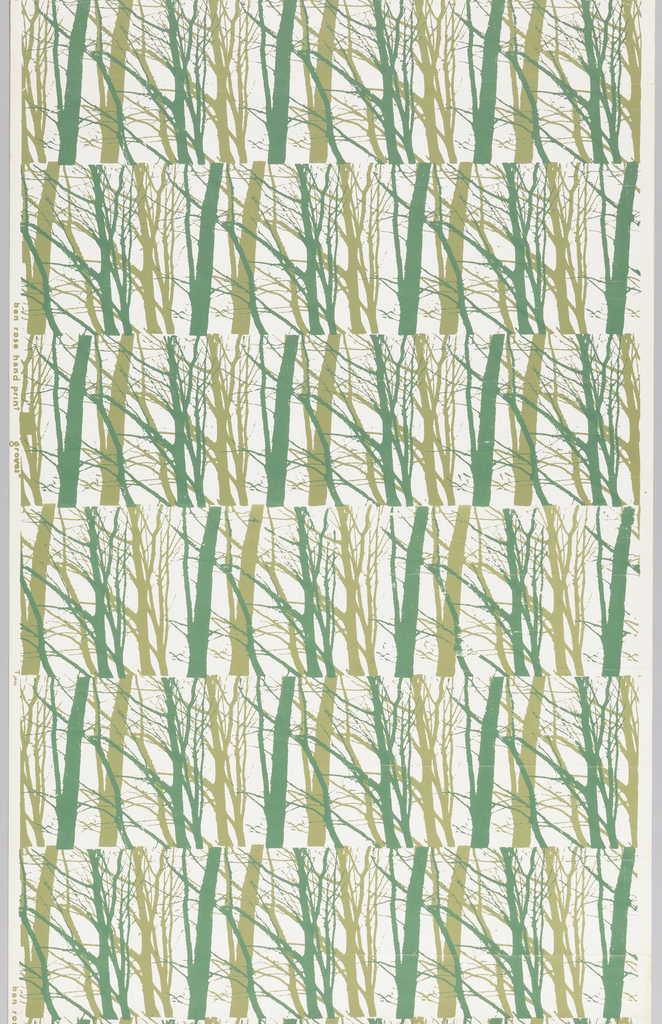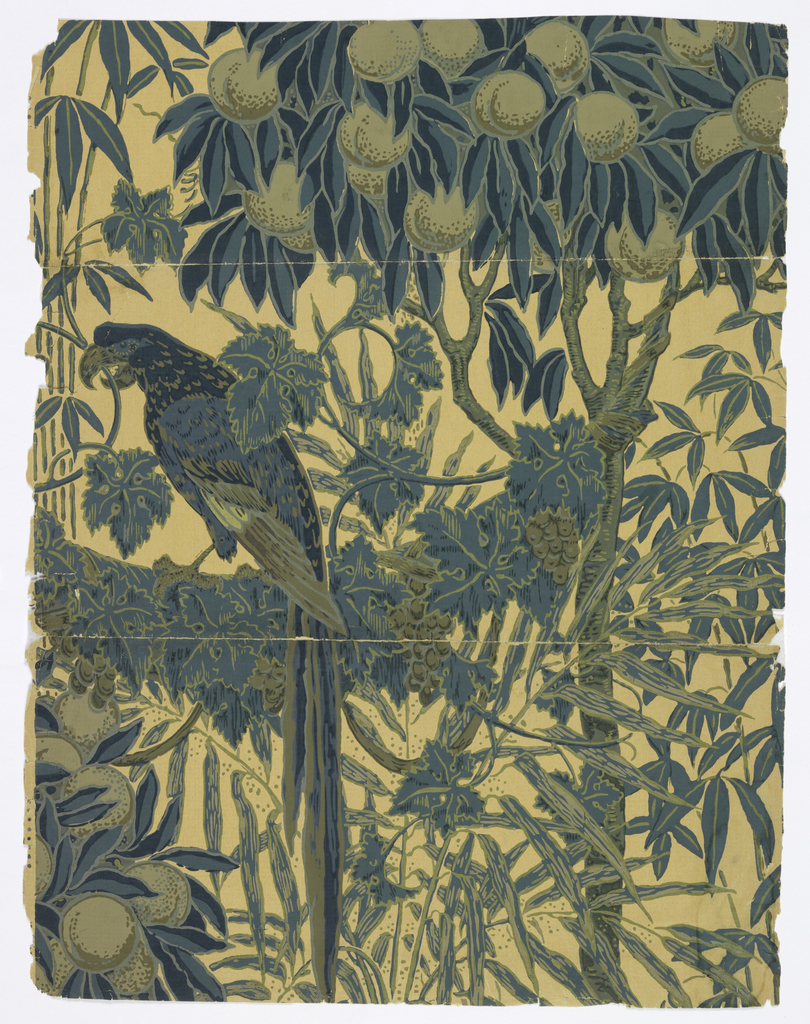Arches is from the first collection of murals Ilonka Karasz designed in 1948 for Katzenbach & Warren, the New York wallpaper firm for whom she designed almost exclusively. Like the majority of her murals it was printed in the blueprint process, her favorite reproduction process for murals as it captured all the nuances of her...
This promotional brochure for the Trees mural designed by Ilonka Karasz in 1960 contains a lot of information packed in an attractive format. This is printed in the luxograph process which was the same technique used to print the full-size murals. This technique was a blueprint method introduced by Katzenbach & Warren in 1947 for...
Ragged, curvy and relentless, the pussy willow catkins in this print are symbolic of the battle for spring that marks the month of March. Designed by Theodor van Hoytema (Dutch, 1863-1917) for a 1911 calendar, one can understand the month it represents even without translating the Dutch word at the top: “Maart” or March. Known...
During the years when America was involved in World War II there was a moratorium on new wallpaper designs as the materials used to make printing rollers and silk screens were all needed for the war effort. This forced manufacturers to continue printing the same designs for years. So when the moratorium ended manufacturers got...
Floating trees with foliage like red clouds form the dominant motifs of this unusual, slightly psychedelic early twentieth-century sidewall. This excellent example of an Art Nouveau-style paper was made by Benton, Heath, & Co. of Hoboken, New Jersey. American wallpaper producers first started making papers in the Art Nouveau style in the mid-1890s, after examples...
Betsy Adams’s sampler is part of a large group of related examples worked from about 1790 until at least 1805 in Boston or nearby towns in Middlesex County. Typical characteristics of these samplers are deeply arcaded borders surrounding a central panel comprising an alphabet, verse, and pictorial elements within a saw-tooth border. The pictorial elements...
This anonymous embroidered picture was probably worked in Boston, where affluent seventeenth- and eighteenth-century New England families frequently sent their daughters to complete their educations. Popular in England during the first quarter of the eighteenth century, such needlework scenes first appeared in Boston in the early 1730s. This example is part of a group of...
This sidewall, manufactured by Ben Rose Inc., was made to cover the majority of the main wall area, between the chair rail and frieze. Groves was screen-printed in 1955, and depicts silhouettes of leafless trees. Screen-printing entails using a large mesh screen, with each separated design layer printed one after the other by hand on...
“Crane’s facile handling of gorgeous birds…has never been excelled,” gushed A.V. Sugden and J.L. Edmondson in their “History of English Wallpaper,” written in 1926. Almost a century later, their compliment still rings true. “Macaw,” designed by Walter Crane for Jeffrey & Company, was originally created as a display piece for the manufacturer’s exhibit at the...
